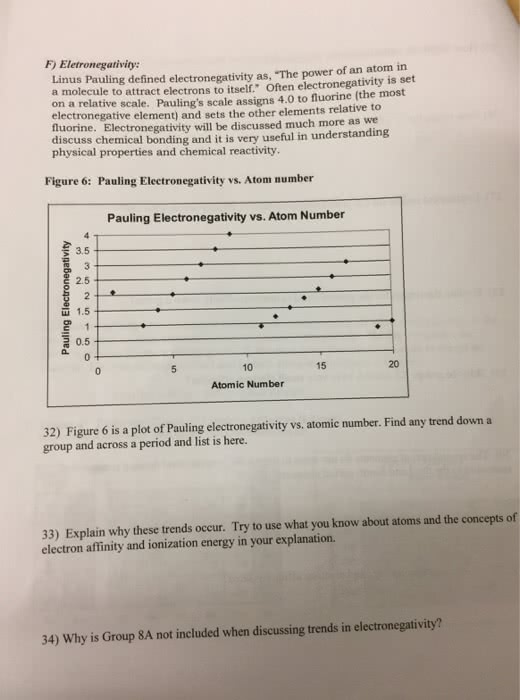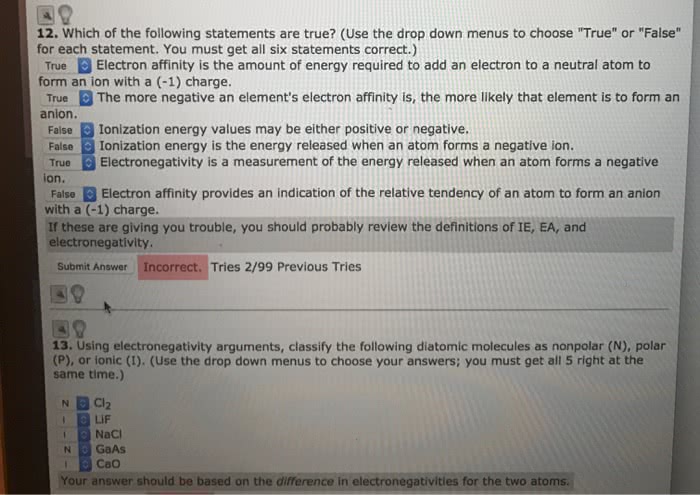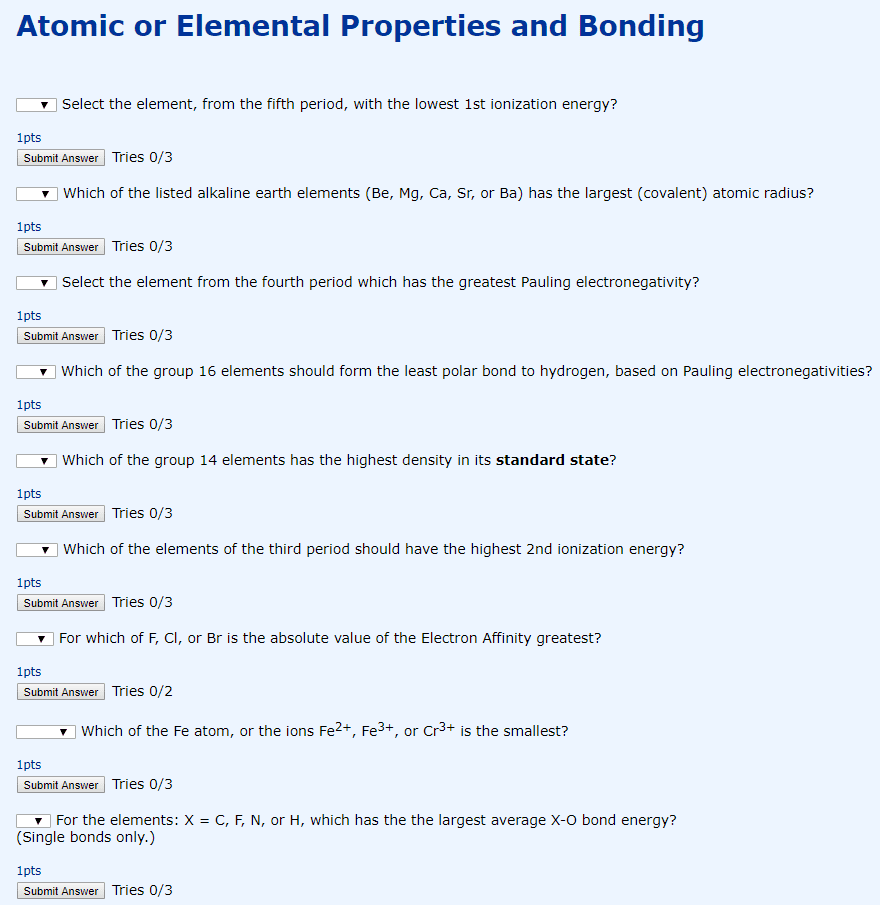One scale for electronegativity is based on the concept that the electronegativity of any atom is proportional to the ionization energy of the atom minus its electron affinity: electronegativity = k(I – EA), where k is a proportionality constant. (a) How does this definition explain why the electronegativity of F is greater than that of Cl even though Cl has the greater electron affinity? (b) Why are both ionization energy and electron affinity relevant to the notion of electronegativity? (c) By using data in Chapter 7, determine the value of k that would lead to an electronegativity of 4.0 for F under this definition. (d) Use your result from part (c) to determine the electronegativities of Cl and O using this scale. (e) Another scale for electronegativity defines electronegativity as the average of an atom’s first ionization energy and its electron affinity. Using this scale, calculate the electronegativities for the halogens, and scale them so fluorine has an electronegativity of 4.0. On this scale, what is Br’s electronegativity?
One scale for electronegativity is based on the concept that the electronegativity of any atom is proportional to the ionization energy of the atom minus its electron affinity: electronegativity = k(I – EA), where k is a proportionality constant. (a) How does this definition explain why the electronegativity of F is greater than that of Cl even though Cl has the greater electron affinity? (b) Why are both ionization energy and electron affinity relevant to the notion of electronegativity? (c) By using data in Chapter 7, determine the value of k that would lead to an electronegativity of 4.0 for F under this definition. (d) Use your result from part (c) to determine the electronegativities of Cl and O using this scale. (e) Another scale for electronegativity defines electronegativity as the average of an atom’s first ionization energy and its electron affinity. Using this scale, calculate the electronegativities for the halogens, and scale them so fluorine has an electronegativity of 4.0. On this scale, what is Br’s electronegativity?



